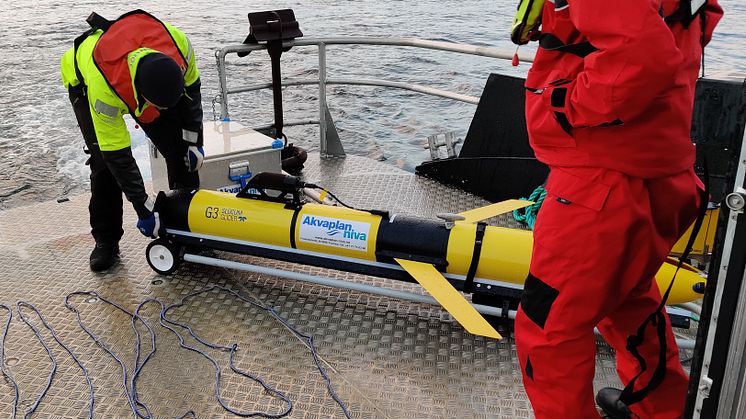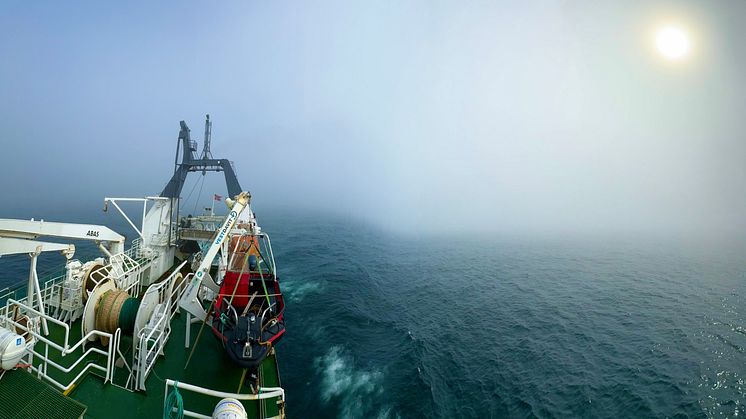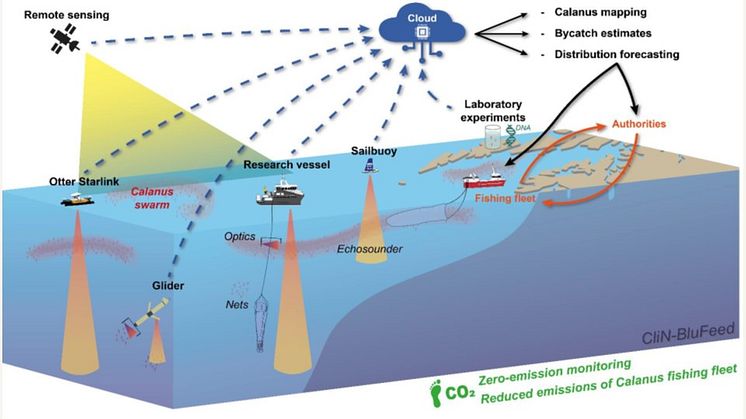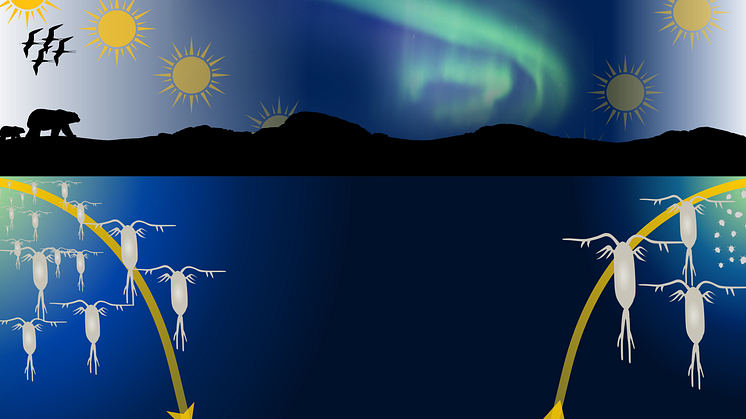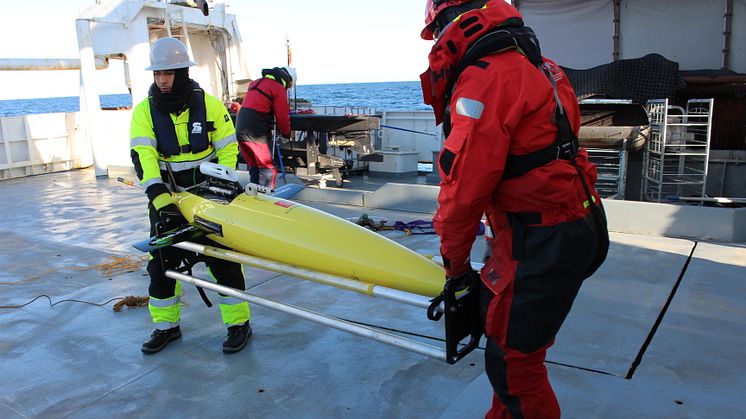
Nyhet -
Hi-Tech ocean research
By Trude Borch, Akvaplan-niva
According to a Global Ocean Science report, Norway is the country with the highest proportion of ocean scientists per inhabitant globally. Due to our many years of offshore operations, we are also a world leader in marine technology, including Subsea technology. This is important for sustainable utilization of our marine resources. We see a growing interest in the utilization of various ocean-related resources and consequently more activities that can negatively affect the marine environment. It is demanding to study the environmental effects from various activities, and environmental authorities often conclude that we have too little knowledge of the impacts of combinations of environmental stressors. This is the reason why researchers are now using autonomous vessels with advanced sensors for knowledge building on marine ecosystems and how these systems are affected by human activities.
Through research, we know a lot about the ocean, about marine species, about the structure and function of various marine ecosystems, about ocean currents, etc. We also know a great deal about how species and ecosystems are affected by climate change and industrial activities. However, it is demanding and costly to produce reliable knowledge about the overall environmental effect from activities like maritime traffic, petroleum extraction, fisheries and aquaculture. Going forward, we will also see the development of offshore wind and perhaps the extraction of seabed minerals.
Scattered data coverage
Studies of combined environmental pressures require large amounts of data on both the physical environment and biological resources. Despite the fact that we have many marine scientists in this country, there is not sufficient funding to fill the many knowledge gaps. Traditional data collection methods involve going out with small boats or larger research vessels and taking samples at sea. However, using boats is resource-intensive, it can be logistically complicated with a long planning horizon. It is physically demanding for field personnel and involves a large consumption of fuel and emissions of greenhouse gases. Scientists therefore usually end up with data from only a few selected geographical areas and times of the year.
Drones-gliders-autonomous vessels
This is why research institutes are now increasingly using ocean drones - also called gliders in the collection of ocean data. These remotely controlled or autonomous vessels, which are equipped with advanced sensors, can be out at sea for months. They can cover large geographical areas and collect enormous amounts of data, at a relatively reasonable cost and with low CO2emissions. We are talking high-tech and big data! Although the research communities in recent years have increasingly used remotely controlled vessels for data collection, this is not a quick-fix. It requires teams with broad competence. There is a need for logistics personnel, drone and computer engineers, marine biologists, ecologists, etc. There is also still a need for vessels to deploy and recover the drones. For this purpose, the research communities use either their own or hired research vessels or other so-called "ships of opportunity". We have received assistance for launching and retrieving our vessels from both offshore petroleum vessels, fishing vessels, well boats from the aquaculture industry, the Norwegian Society for Sea Rescue and the Norwegian Coast Guard.
The vessels that researchers are now increasingly taking into use as a supplement to more traditional data collection are most often developed to map physical conditions in the sea, such as ocean currents, temperature and salinity. Recently, however, these vessels have been equipped with sensors that enable the collection of biological data. Here we have many different ongoing projects that are led by the R&D community in Tromsø, Norway.
Listening for and photographing Calanus
In the projects Migratory Crossroads and CliN-BluFeed, the focus is on Calanus, the small zooplankton which, due to its attractive fatty acids, has great importance in marine ecosystems and potential as a feed ingredient in fish farming. Both projects will use a surface drones or autonomous vessels, a moored buoy, and a diving drone, the Seaglider. Among other things, these vessels will be equipped with advanced echosounders that will "listen for" animals and an optical instrument for photographing small animals in the water column. The data collection for these projects starts this spring outside the Lofoten Islands in Arctic Norway. Since the bloom of phytoplankton, which is food for the Calanus, takes place during spring, the researchers expect to find great biological activity.
The vertical migration of zooplankton is referred to as the largest synchronized animal movement in the world. The zooplankton Calanus has two different vertical movements in the water column, a daily one of between 10 and a few hundred meters and a seasonal one of hundreds or thousands of meters. The Migratory Crossroads project will study the effects of climate change on these migrations.
Calanus swarms
Norwegian authorities have set the development of sustainable feed as one of two main social missions. The objective is that all feed for farmed fish and other livestock should come from sustainable feed sources, thus contributing to net reductions in climate emissions. Due to overexploited marine fish stocks, there has recently been a focus on land-based feed ingredients in Norway. However, new research shows that fish-health status improves with a higher proportion of marine feed ingredients. This is the background for an increased search for exploitable marine species. In the EU-funded CliN-BluFeed project, the aim is to develop a model for a more sustainable harvest of Calanus as a feed ingredient for the aquaculture industry. Data for the development of this model will be collected using the previously mentioned drones and analyzed using artificial intelligence. Today, commercial fishing vessels harvesting Calanususe large amounts of fuel to identify harvestable aggregations of Calanus. This is not sustainable for the environment nor for the economy of the companies participating in this fishery. Now, scientists will try to develop a tool that can identify "swarms" of Calanus that can constitute a catch that justifies the use of time and fuel searching for and harvesting Calanus. We wish the scientists that these days are accompanying the first summer tourists in the the Lofoten Island, the best of luck in both listening for and photographing Calanus.
This article has previously been published in the Norwegian newspaper Fiskeribladet and Nordlys.
Contact person CliN-BluFeed: Lionel Camus
Contact person Migratory Crossroads: Kanchana Bandara

